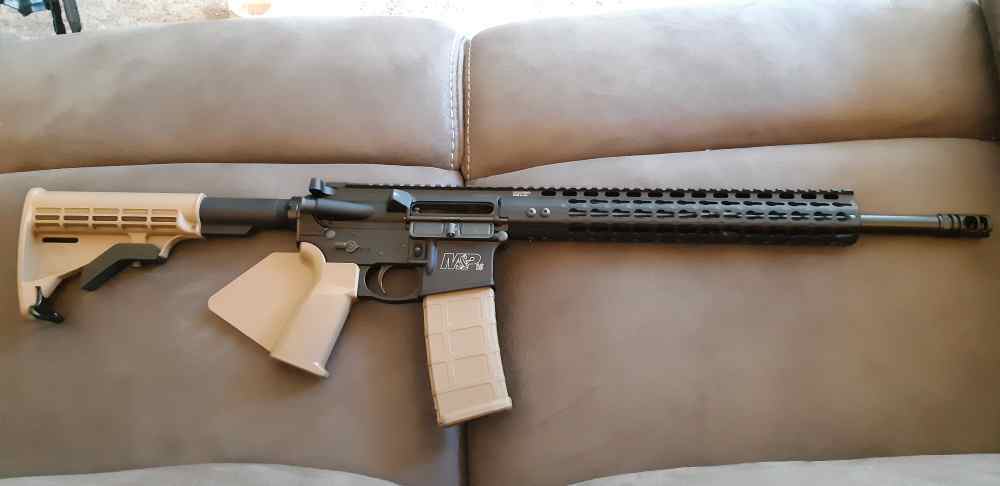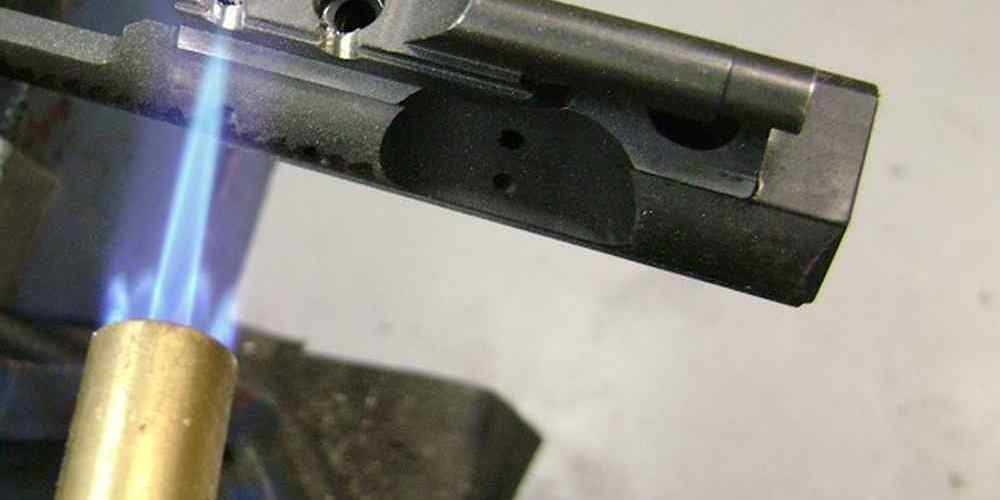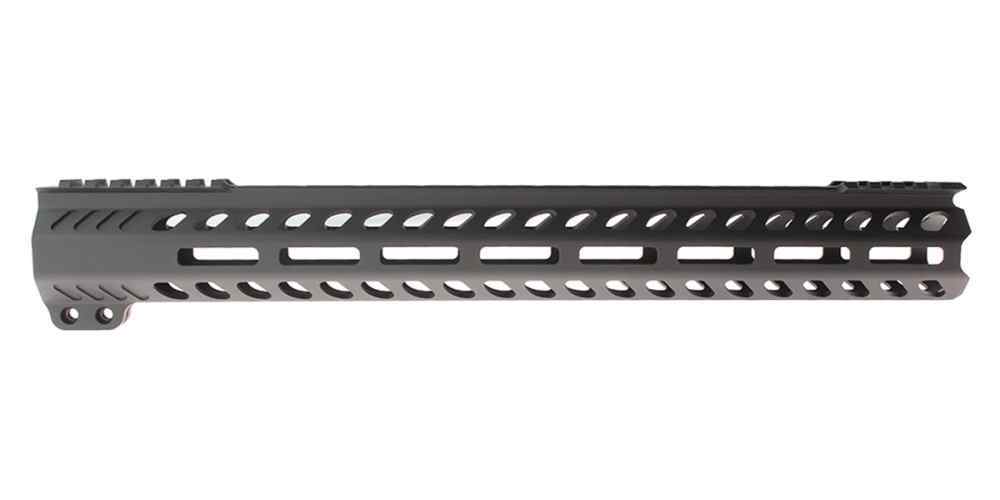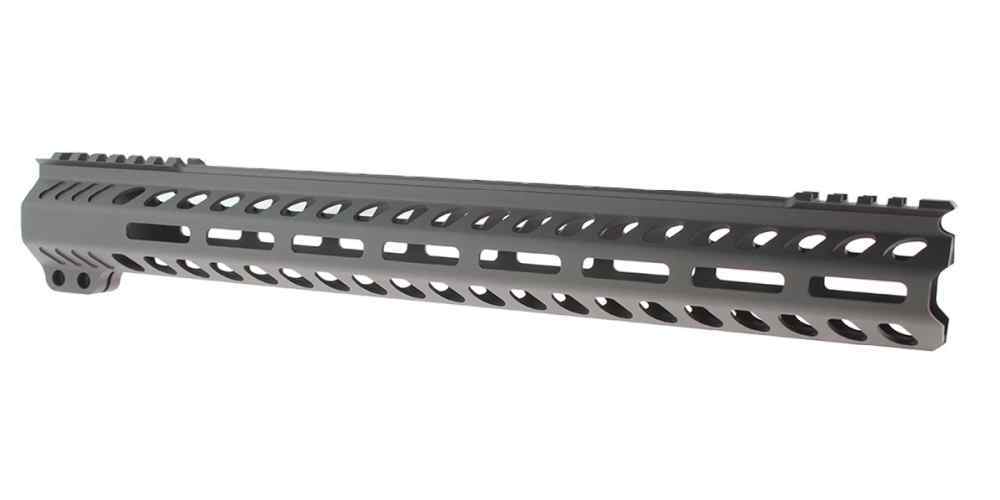“AR15 Electrical Expertise: Mastering Trigger Electronics for Unmatched Performance”
Troubleshooting Common AR-15 Trigger Electronics Problems
AR15 Electrical Issues: Handling Trigger Electronics and More
The AR-15 rifle, a favorite among enthusiasts and professionals alike, is renowned for its modularity and versatility. However, with the advent of advanced trigger systems, which often incorporate electronic components, users may encounter a new set of challenges. Troubleshooting common AR-15 trigger electronics problems requires a blend of technical know-how and a methodical approach to ensure that your firearm functions safely and reliably.
When dealing with trigger electronics, the first step is to understand the basics of how these systems operate. Electronic triggers typically use a small battery to power a circuit that, when activated by the trigger pull, sends an electronic signal to release the hammer or firing pin. This system can offer a crisper, more consistent trigger pull, but it also introduces new potential points of failure not present in traditional mechanical triggers.
One of the most common issues with electronic triggers is a failure to fire. This can be caused by a range of factors, from a simple dead battery to more complex circuitry problems. To diagnose the issue, start by checking the battery. Ensure it is properly seated and has sufficient charge. If replacing the battery doesn’t solve the problem, you may need to delve deeper into the trigger’s electronics.
A multimeter can be an invaluable tool in this situation. Use it to check for continuity in the trigger’s wiring and to ensure that there are no shorts or breaks in the circuit. If you’re not familiar with using a multimeter, take the time to learn its functions or consult with someone who is experienced in electronics. Remember, safety is paramount, so always ensure your firearm is unloaded and safe to handle before beginning any troubleshooting.
Another issue that can arise is inconsistent trigger response. This can manifest as a trigger that sometimes works perfectly and other times fails to fire or has a delayed response. This intermittent behavior can be particularly frustrating and is often due to loose connections or corrosion on the contacts. Carefully inspect all connections and clean any contact points with a suitable electronic contact cleaner. This can help ensure that the signal from the trigger is being transmitted reliably.
In some cases, the problem may not be with the trigger electronics themselves but with the compatibility between the electronic trigger and other aftermarket components installed in the rifle. For instance, certain bolt carrier groups or lower receiver configurations may not interface well with particular electronic triggers. If you suspect this to be the case, consult with the manufacturer’s compatibility guidelines or reach out to their customer support for advice.
Lastly, firmware issues can also cause problems with electronic triggers. Some models may require updates or recalibration to function correctly. Check the manufacturer’s website for any available firmware updates and follow their instructions carefully to apply them. This can resolve issues that are not hardware-related but stem from the software controlling the trigger mechanism.

In conclusion, while electronic triggers can offer significant performance benefits, they also require a more nuanced approach to troubleshooting. By starting with the basics, such as battery checks and connection inspections, and progressing to more advanced diagnostics with tools like a multimeter, you can effectively address many common issues. Remember to always prioritize safety, consult with experts when in doubt, and keep abreast of any updates from the trigger manufacturer. With a systematic approach and a bit of patience, you can ensure that your AR-15’s electronic trigger performs at its best, providing a reliable and enjoyable shooting experience.
Upgrading Your AR-15 with High-Performance Electrical Components
AR15 Electrical Issues: Handling Trigger Electronics and More
The AR-15 rifle, a staple in the world of firearms, is renowned for its modularity and the ease with which enthusiasts can upgrade its components. Among the various enhancements available, high-performance electrical components are gaining popularity for their ability to provide a more responsive and reliable shooting experience. However, as with any technological advancement, incorporating these elements into your AR-15 setup can come with its own set of challenges, particularly when it comes to trigger electronics and other electrical issues.
When delving into the realm of trigger electronics, the first thing to consider is the installation of a high-quality electronic trigger system. These systems are designed to offer a cleaner break, a shorter reset, and a lighter pull weight, which can significantly improve accuracy and speed. However, the precision of these electronic triggers requires a meticulous installation process. It’s crucial to ensure that all connections are secure and that the components are compatible with your AR-15’s configuration. A loose connection or an incompatible part can lead to malfunctions or inconsistent performance, which is the last thing you want when precision is paramount.
Moreover, the power source for these electronic triggers is another critical factor. Most systems run on batteries, and it’s essential to use the recommended type and to keep spares on hand. A dead battery in the middle of a shooting session can render the high-tech trigger useless, reverting the rifle back to a standard mechanical operation. Therefore, regular maintenance and battery checks should become a part of your routine to avoid any untimely surprises.
Beyond the trigger, other electrical upgrades can include illuminated optics and electronic recoil systems. These components can enhance your shooting experience by providing better target acquisition and reducing felt recoil. However, they also introduce additional complexity to your firearm’s electrical ecosystem. It’s important to understand the power requirements and compatibility of these systems with your AR-15. Overloading the rifle’s electrical capacity can lead to failures or even damage to the components.
One common issue that arises with the integration of multiple electrical upgrades is interference. Electronic devices can sometimes emit signals that interfere with one another, leading to erratic behavior or malfunctions. To mitigate this, it’s advisable to select components that are shielded or designed to operate harmoniously with other electronics. Additionally, proper grounding and routing of wires can prevent electromagnetic interference from compromising the performance of your upgrades.
When troubleshooting electrical issues on your AR-15, a systematic approach is key. Start by checking the most basic connections and power sources before moving on to more complex diagnostics. Often, the problem can be as simple as a loose wire or a depleted battery. If the issue persists, consulting with the manufacturer or a professional gunsmith can provide insight into the problem and potential solutions.
In conclusion, upgrading your AR-15 with high-performance electrical components can transform your shooting experience, offering enhanced precision and functionality. However, it’s essential to approach these upgrades with a technical mindset, ensuring that each component is installed correctly, maintained diligently, and compatible with the rest of your setup. By doing so, you’ll be able to enjoy the benefits of these advanced features while minimizing the risk of electrical issues that could otherwise hinder your rifle’s performance. Remember, the key to a successful upgrade lies in the details, and a friendly, methodical approach to handling trigger electronics and other electrical components will keep your AR-15 firing smoothly and reliably.
The Impact of Weather on AR-15 Electrical Systems
AR15 Electrical Issues: Handling Trigger Electronics and More
The AR-15 rifle, a staple in the world of firearms, has evolved significantly over the years, with advancements in technology introducing electrical systems into its operation. These systems, particularly in the form of electronic triggers, have revolutionized the shooting experience by providing crisp, consistent trigger pulls. However, these sophisticated components are not without their vulnerabilities, especially when it comes to the impact of weather on their performance and reliability.
Understanding the sensitivity of AR-15 electrical systems to weather conditions is crucial for maintaining optimal functionality. Electronic triggers, for instance, rely on circuitry that can be affected by extreme temperatures. In cold environments, battery performance can degrade, leading to slower response times or even complete failure to fire. Conversely, high temperatures can cause overheating, potentially damaging the electronic components and affecting their longevity.
Moisture is another significant concern for AR-15 electrical systems. Rain, snow, and high humidity can all lead to moisture ingress, which can short-circuit the delicate electronics within the trigger mechanism. This not only poses a risk to the immediate functionality of the rifle but can also lead to corrosion over time, further compromising the integrity of the system.
To mitigate these issues, it’s essential to take proactive measures. For instance, using weather-resistant coatings and sealants can provide an additional layer of protection against moisture. Manufacturers often design electronic triggers with these considerations in mind, but it’s always beneficial to reinforce this protection, especially if you frequently operate in harsh weather conditions.
Furthermore, regular maintenance is key to ensuring the longevity of your AR-15’s electrical components. After exposure to adverse weather conditions, a thorough inspection and cleaning can prevent the buildup of moisture and debris that could lead to electrical failures. It’s also wise to store your rifle in a controlled environment where temperature and humidity levels are stable.
Battery maintenance is another critical aspect of managing AR-15 electrical systems. Always ensure that batteries are fully charged and in good condition before use, and consider carrying spares if you’re heading into environments where temperature extremes are expected. Some shooters opt for batteries with a proven track record of performance in various weather conditions, providing an extra layer of assurance.
In addition to these preventative measures, staying informed about the latest advancements in AR-15 electrical systems can be beneficial. Manufacturers are continually innovating, creating more robust and weather-resistant components. Keeping abreast of these developments can help you make informed decisions when upgrading or replacing parts of your rifle.
Lastly, it’s important to recognize that while electronic triggers offer many advantages, they are not immune to the laws of physics and electronics. As such, having a backup plan, such as a traditional mechanical trigger, can be a wise precaution. In the event of an electrical failure, being able to switch to a mechanical system ensures that your rifle remains operational, regardless of the weather conditions you face.
In conclusion, the impact of weather on AR-15 electrical systems cannot be overstated. By taking a proactive approach to maintenance, protection, and staying informed about technological advancements, you can enjoy the benefits of electronic triggers while minimizing the risks posed by environmental factors. With the right care and preparation, your AR-15’s electrical components can provide reliable performance in even the most challenging conditions.
Essential Maintenance Tips for AR-15 Electrical Reliability
The AR-15 rifle, a staple in the world of firearms, has evolved significantly over the years, with advancements in technology introducing electrical components such as electronic triggers. These sophisticated systems enhance the shooting experience but also bring a new set of maintenance challenges. Ensuring the reliability of your AR-15’s electrical systems requires a technical understanding and a meticulous approach to care.
Firstly, it’s crucial to recognize the importance of battery management. Electronic triggers and other firearm accessories often rely on batteries, which can be a weak link if not properly maintained. To avoid being caught off guard by a dead battery, make it a habit to check power levels before heading to the range. Additionally, storing spare batteries in your kit ensures you’re prepared for any situation. Remember, extreme temperatures can affect battery performance, so keep your spares in a climate-controlled environment.
Transitioning to the trigger assembly, the heart of your AR-15’s electrical system, cleanliness is paramount. Residue from gunpowder and environmental debris can accumulate and interfere with electrical contacts. A regular cleaning schedule, using a dry cloth or a brush designed for sensitive electronics, will help maintain a crisp, responsive trigger action. Avoid using excessive liquid cleaners, as they can seep into the circuitry and cause corrosion or short-circuits.
Moreover, the connections between the trigger assembly and other electronic components must be secure. Loose connections can result in intermittent functionality or complete failure. Periodically check the tightness of screws and ensure that any plugs are fully seated. If you encounter a connection that frequently loosens, consider using a thread-locking compound to maintain a firm hold without making the connection permanent.
Another aspect to consider is the shielding of wires and electronic parts. The AR-15’s operation generates significant vibration and shock, which can damage delicate electronics. Ensure that wires are neatly routed and secured away from moving parts. Protective coverings or conduits can provide an additional layer of defense against physical damage and electromagnetic interference, which can be particularly disruptive to precision electronic components.
Firmware updates are also an essential part of maintaining electronic triggers. Manufacturers may release updates to improve performance or address known issues. Keeping your trigger’s firmware up-to-date ensures you benefit from the latest enhancements and fixes. Always follow the manufacturer’s instructions for updates, and if you’re not confident in performing the update yourself, seek assistance from a professional gunsmith.
Lastly, while the allure of customization is strong among AR-15 enthusiasts, be cautious when integrating third-party electronic accessories. Not all components are created equal, and some may not be compatible with your rifle’s electrical system. Research thoroughly and choose reputable brands that provide clear installation instructions and support. Incompatible or poorly designed accessories can lead to malfunctions or even damage your rifle’s electronics.
In conclusion, maintaining the electrical reliability of your AR-15 requires a blend of proactive battery management, meticulous cleaning, secure connections, protective measures, firmware vigilance, and careful customization. By adhering to these essential maintenance tips, you can ensure that your rifle’s electronic enhancements function as intended, providing a seamless and enjoyable shooting experience. Remember, the key to electrical reliability is as much about prevention as it is about intervention, so take the time to care for your AR-15’s electronics with the same precision and dedication you apply to the rest of the rifle.
Diagnosing and Fixing AR-15 Electrical Failures in the Field
The AR-15 rifle, a staple in the arsenals of shooting enthusiasts and professionals alike, is renowned for its reliability and versatility. However, as with any sophisticated piece of machinery, it is not immune to occasional malfunctions. Among these, electrical issues can be particularly perplexing, especially when they involve the rifle’s trigger electronics. In this article, we’ll explore the common electrical failures that can occur with the AR-15 and provide guidance on how to diagnose and fix them in the field.
Firstly, it’s important to understand that the AR-15’s trigger system can be enhanced with electronic components to improve performance. These electronic triggers can offer a crisper break, a shorter reset, and a lighter pull weight. However, they also introduce complexity to the system, which can lead to electrical failures. Such failures can manifest as a trigger that doesn’t respond, intermittent firing, or even runaway firing in extreme cases.
When faced with an electrical issue in the field, the initial step is to ensure safety. Always clear the firearm before attempting any diagnostics or repairs. Once the rifle is safe to handle, begin by checking the power source. Electronic triggers typically rely on batteries, and a simple battery replacement can often resolve the issue. If the problem persists after swapping out the batteries, it’s time to delve deeper.
Next, inspect the connections and wiring. Loose or corroded connections can disrupt the electrical circuit, leading to inconsistent trigger performance. Tighten any loose connections and clean any corrosion you find. Use a contact cleaner for electrical components to ensure a good connection. It’s also wise to check for any visible damage to the wires themselves, such as cuts or fraying, which could cause a short circuit or an open circuit.
If the connections and wiring appear to be in good condition, the problem may lie within the trigger’s electronic module itself. This is where having a basic understanding of electronics comes in handy. Use a multimeter to check for continuity in the trigger’s circuitry. If you detect a break in the circuit, the electronic module may need to be replaced. However, it’s important to note that not all shooters will be comfortable or equipped to perform this level of troubleshooting in the field.
In some cases, the issue may not be with the electronics at all but with the mechanical components of the trigger assembly. Dirt, debris, or a lack of lubrication can cause the trigger to stick or fail to reset properly. A thorough cleaning of the trigger assembly and application of appropriate lubricants can often restore functionality.
It’s also worth considering environmental factors that can affect electronic components. Extreme temperatures, moisture, and dust can all lead to electrical failures. Protecting your AR-15 from harsh conditions and storing it properly when not in use can prevent many of these issues from arising in the first place.
In conclusion, while electrical issues with AR-15 trigger electronics can be daunting, they are often resolvable with a systematic approach. Start with the basics, such as checking the power source and connections, and work your way up to more complex diagnostics if necessary. Remember that safety is paramount, and if you’re ever in doubt, it’s best to consult with a professional gunsmith. With a little knowledge and the right tools, you can keep your AR-15’s trigger electronics in top condition, ensuring reliable performance when you need it most.









